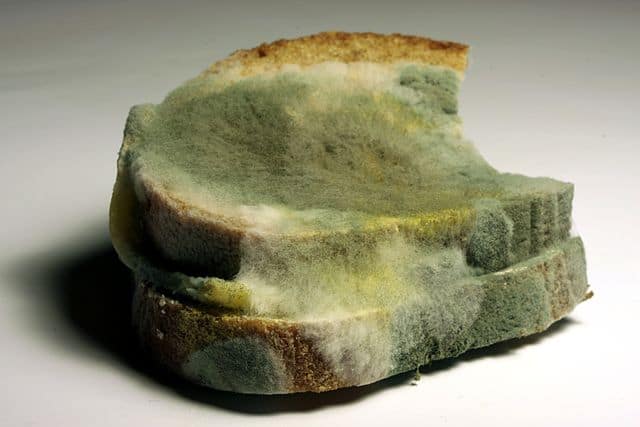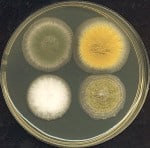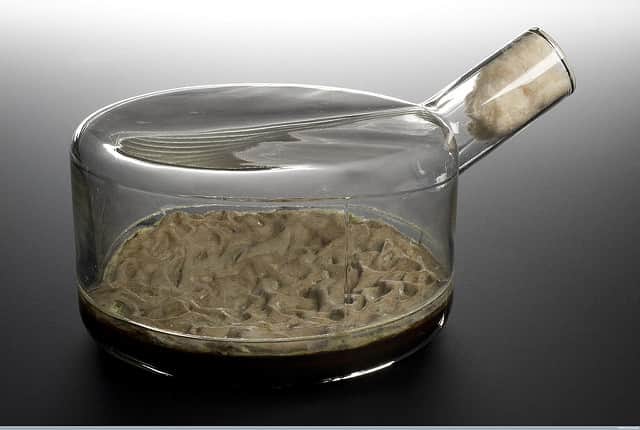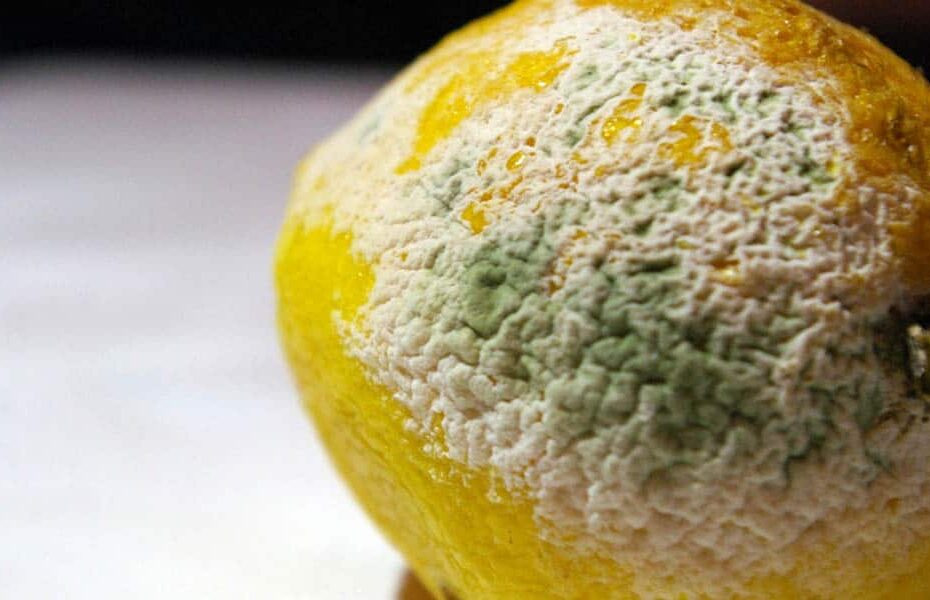[ad_1]
One of the hottest topics in the prepper and survivalist world is how to make penicillin at home.
Considering how expensive healthcare is, I wouldn’t be surprised if there aren’t some DIY types also wanting to learn how to make penicillin.
Because penicillin is “just mold bread” and was discovered by accident, it might seem pretty easy to make penicillin. Yes, it is – but it is really hard to make penicillin safely. If you want to learn how to make DIY penicillin, here’s what you need to know.
Even in SHTF Situations, Homemade Penicillin Probably Isn’t a Good Solution
Before I even get into the (complex) instructions on how to make penicillin at home, I want to emphasize that it isn’t as straightforward as many prepper sites would have you think.
- Penicillin doesn’t treat superbugs: Antibiotic-resistant bacteria is a huge problem. Already many bacterial strains are resistant to penicillin. So, don’t count on penicillin to save you from every infection!
- Penicillin doesn’t treat all infections: Penicillin can be used in many throat, respiratory, and skin infections. It won’t treat tooth infections or UTIs (amongst others).
- It requires strange ingredients: Most people won’t have these things at home if SHTF. That’s an insane level of preparedness. Even if you do have the supplies, it’s still very complicated to safely make penicillin.
When Would I Recommend Learning to Make Penicillin?
I think learning any skill is a good use of time. However, I personally think that this one only makes sense if you plan on becoming an expert. I mean REAL EXPERT.
Why?
Because you could make penicillin as a SHTF bartering item. You’ll become much more valuable to your survival community if you know this too. Otherwise, you are spending a lot of time on this skill when simpler alternatives exist.
Alternatives to Homemade Penicillin
Most doctors won’t give out prescriptions for antibiotics “just in case.” Even if they did, those antibiotics can be really expensive!
A better alternative is to use fish antibiotics, which currently don’t require a prescription, are cheap, and easy to get.
Recommended Reading: What you need to know about fish antibiotics for humans
But, just in case you still want to learn to make penicillin, here are the instructions!
Good luck!!!
Step 1. Isolating Penicillin Bacteria
Put a piece of bread, cantaloupe, or citrus fruit in a container in a dark place at 70 degrees F. It should be in a closed (but not airtight) container. It helps to add a few drops of water to the container and leave all but one corner closed to keep in moisture.
It can take weeks for the mold to start growing. Hopefully, you aren’t trying to treat gangrene with your DIY penicillin because your patient will likely be dead before you get any usable spores.
The bread or fruit will start getting a gray mold. This gray mold will eventually turn a bluish-green color. This is the mold that you want for making penicillin!
Note: You’ll want to use homemade bread because most commercial bread contains additives to inhibit mold growth.
Step 2. Re-culturing the Penicillin

The greenish-blue mold you grew contains penicillin. Some people call this mold “natural penicillin” and say you can use it immediately. Unfortunately, this isn’t the case.
Does NOT Work:
- Rubbing Mold Onto a Wound: Rubbing penicillin mold onto a wound might treat surface bacteria, but won’t help much if the bacteria has already spread into the bloodstream.
- Drinking Mold Tea: The penicillin derived directly from mold is very sensitive to stomach acid. If you drink it as penicillin tea, it will be destroyed before it makes it to your bloodstream. The only way to make this penicillin work is to inject it (not recommended!).
To get the benefits of penicillin from mold, it has to be further cultured.
Re-Culturing Penicillin
All links go to the product on Amazon for your convenience.
- Thinly slice 200 grams of unpeeled potatoes.
- Put the potatoes into a 1-liter mason jar and fill with distilled water. Screw on the lid tightly. Put the entire jar into a pot of boiling water. Boil for 30 minutes.
- Once it cools a bit, open the jar. Strain the contents through a cheesecloth (sterilized lace curtains work in a pinch). Catch the liquid! This is the “broth” that you need.
- Add 20g of glucose (aka dextrose) to the broth. If you don’t have glucose, plain sugar will work.
- Add 20g of agar to the broth. If you don’t have agar, then plain gelatin (not Jello) will work. Note that the agar isn’t going to completely dissolve. That’s okay.
- Add distilled water until the total volume is 1 liter.
- Pour the broth into wide, flat jars with a sealable lid. Basically, anything that could work as a petri dish. If you actually have Petri dishes, then use ‘em!
- Cover the dishes immediately to prevent microbes from the air from getting into them.
Step 3. Streaking Your “Petri Dish”
Now it is time to move your penicillin mold spores to your “Petri dishes” that have the potato broth in them.
There is a very specific method that scientists use for growing cultures. It is called “streaking.”
- Get a thin piece of wire. Bend the tip into an oval shape.
- Sterilize the tip of the wire in a flame. It should be red hot.
- Dip the hot wire into the potato broth to cool it down (so the heat doesn’t kill your penicillin spores).
- Now touch the wire tip to the greenish-blue penicillin mold.
- Make three lines on your petri dish. This is where the colonies of penicillin will start growing.
Step 4: Let Your Penicillin Grow

Keeping it covered, let the penicillin grow in your DIY Petri dishes for about a week.
Penicillin is a yellow color.
However, other species of bacteria can also be yellow, so it is hard to tell for sure that you got penicillin without a trained eye and a microscope.
Step 5: Fermenting Your Penicillin
Here is where things get a bit complicated. You need to ferment your penicillin spores so they reproduce in huge numbers. Otherwise, it will be like trying to put out a forest fire with a bucket of water.
At most prepper websites, they tell you to get a bunch of weird ingredients like potassium monophosphate and sodium nitrate. That method works – but I doubt you will find those things laying around when SHTF.
Here’s a simpler method of fermenting penicillin.
Supplies
These ingredients are all available on Amazon (click the images to view prices)
Instructions
- Sterilize the flask in the oven at 315 degrees F for one hour.
- Put 1 tsp each of glucose, yeast, citric acid, milk powder, and sea salt into your graduated cylinder.
- Fill the cylinder with water until it reaches the 100ml mark.
- Pour the contents into your flask.
- Put the lid on and shake until the contents are dissolved.
- Add your penicillin cultures to the flask. Make sure you are using sterile methods, such as using a sterilized metal loop to add the cultures!
- Cover the flask with sterilized aluminum foil. This will keep unwanted microbes out of the flask while still allowing for air flow.
- Let the flask sit for at least 7 days but no longer than 14 days.

Step 6: Extracting the Penicillin
After a week, you’ve got fermented penicillin in the flask.
You’ve got to get out all of the other ingredients before you can use it though.
Instructions
- There are going to be solid parts in the liquid. You need to separate these from the liquid. The liquid is the part which contains the penicillin, so you want to hang on to it!
- Strain the penicillin liquid through a coffee filter or sterilized cheesecloth. Catch the liquid in a sterile container.
- Now you need to adjust the pH of the penicillin. Add a drop of hydrochloric acid and then test the pH. It will probably be a pH of around 5 when you start. Keep adding drops and testing until you get a pH of 2.2.
In theory, you could use this extracted penicillin now. However, the penicillin is very unstable.
You’d have to use it right away. Considering that most infections need multiple rounds of antibiotics to treat, your whole efforts would be for nothing.
Thus, you have to do the fairly complicated and scientific step of further extracting the penicillin.
Supplies
Step 7: Further Extraction
Ethyl acetate is used to completely extract pure penicillin.
The penicillin dissolves into the ethyl acetate. Then the ethyl can be evaporated, leaving you with pure penicillin.
Instructions
- Chill ethyl acetate in a freezer.
- Mix the cold ethyl acetate and penicillin liquid in a separator funnel.
- Shake them together for 30 seconds, then allow them to separate again. The ethyl acetate will sink to the bottom.
- Open the separator funnel and allow just the ethyl acetate to slowly drip out into a sterile collection container (a mason jar works for this).
- Now add potassium acetate to the ethyl acetate. You’ll need about 1g of potassium acetate for each 100ml of solution you have.
- Leave the solution uncovered in a ventilated area. The ethyl will evaporate, leaving behind penicillin.
Supplies
Using Your Homemade Penicillin
You’ll note that we started with about 100ml of fermentation. From that amount, you’ll probably only get about 100mg of penicillin.
Considering that the penicillin dosage for treating strep throat is 125-250mg taken every 6-8 hours for 10 days, you’ll need a lot of homemade penicillin to treat an infection!
A Better Solution?
I still think that knowing how to make penicillin is a good skill to have, but I wouldn’t bother until you’ve learned the core medical essentials.
Prevention is best, so take your first aid skills to the next level, learn how to treat a wound so it doesn’t get infected and consider growing a medicinal herbal garden.
And if you do master the science of making antibiotics at home, then let me know — I’d love to have you on my survival team. 😉
[ad_2]
Source link
